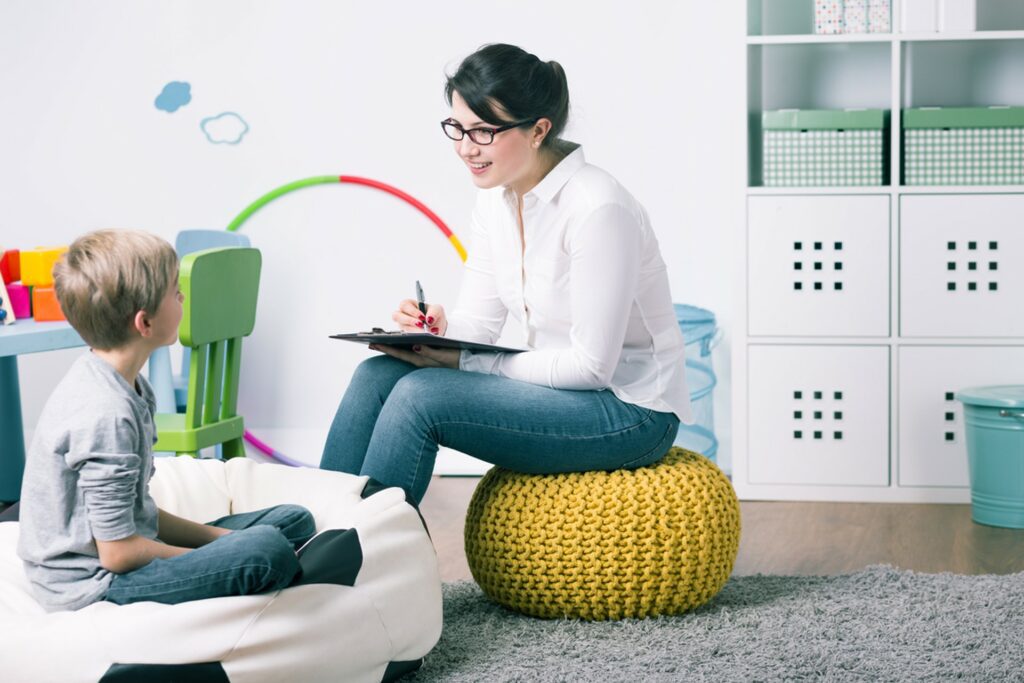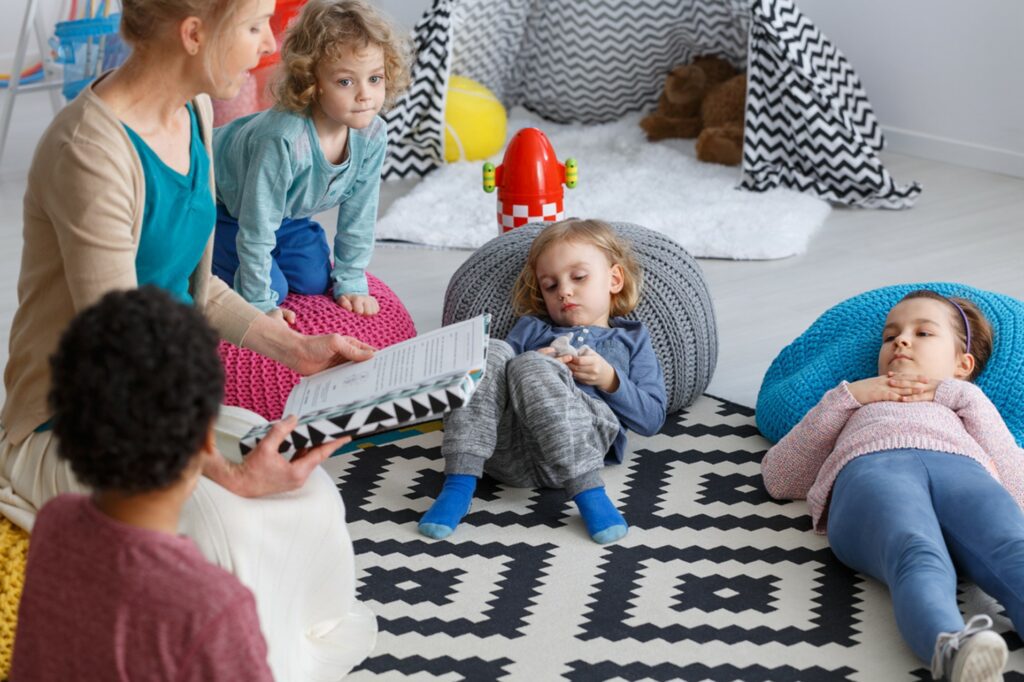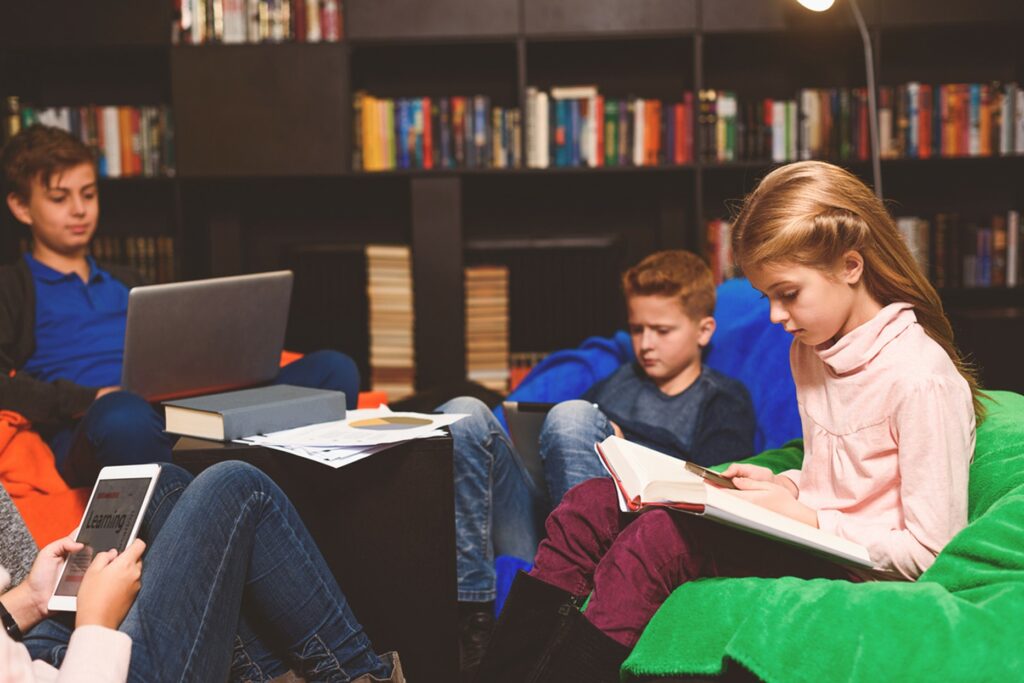By adopting flexible seating, we are taking a significant step towards creating a more dynamic, inclusive, and effective learning environment for all students.

Several years ago, I was helping in a Learning Center with elementary students who needed additional support in certain subjects. We had several incentives to keep them focused and ensure they completed their work. The most popular among these was the opportunity to sit in the teacher’s chair for a while. This chair was comfortable and equipped with wheels, a stark contrast to their regular hard plastic seats. Even the mere act of rolling the chair to their small group area was an exciting change. Of course, the privilege of using the chair came with the expectation that they would remain focused on their tasks, rather than simply enjoy rolling around the room.
It’s worth contemplating this anecdote and the underlying message it carries about the role seating plays in a student’s educational experience. The traditional classroom, with its uniform, fixed, and rigid seating arrangements, is being steadily replaced by an innovative, dynamic concept—flexible seating. In essence, this transformation is about placing students’ individual needs and comfort at the core of classroom design and creating a more engaging and active learning environment.
This article delves deeper into this concept, what types of seating work best for different age groups, and the potential shifts in teaching strategies that may be needed when using flexible seating.
Understanding Flexible Seating: A Departure from the Norm
Flexible seating, at its core, encapsulates an environment where students can choose their seating based on the task at hand and their individual preferences. This could include options such as bean bags, yoga balls, standing desks, and low tables, providing a diverse array of choices to suit different activities and comfort levels.
One might wonder, what makes this approach superior to traditional seating? Some of the immediate benefits of flexible seating include burning more calories, using up excess energy, improving metabolism, increasing motivation, creating a better oxygen flow to the brain, and improving core strength and overall posture.
Research conducted by renowned institutions like Texas A&M University suggests that giving students a say in their seating arrangement can also significantly enhance academic performance, behavior, and overall engagement. It’s the classic example of Maslow’s hierarchy of needs at work; when students’ physiological needs are met (comfort), they’re better poised to engage and learn.
Studies like those by Flippin, Clapham, and Tutwiler have also shown that incorporating kinesthetic classroom equipment into learning environments can yield a positive influence on the on-task behavior of elementary students.

Flexible Seating Across Age Groups: A Closer Look
When applied thoughtfully, flexible seating can have unique advantages for different age groups. Here’s a comprehensive look:
Preschoolers: At this tender age, children are bundles of energy, curiosity, and developmental potential. An assortment of floor mats or carpet squares, bean bags, low-level tables, and soft modular seats work exceptionally well for this age group. The variety not only accommodates their early developmental needs, especially motor skills and coordination, but also enables them to burn off some energy, keeping them more alert and focused.
Elementary Students: As kids grow, their needs and preferences change. For elementary-aged children, seating options that allow a little wiggle room can be immensely beneficial. Choices like wobble stools, yoga balls, and balance boards let them expend their energy while keeping their minds engaged in learning tasks.

Wobble Chair Image Used with permission from Kore Stool
Middle School Students: As children mature into adolescents, they crave more autonomy and responsibility. For middle school students, offering a spectrum of seating options such as standing desks, couches, and comfortable chairs can nurture these burgeoning traits. By allowing them the freedom to choose their seating, we’re enabling them to take responsibility for their learning. As several teachers have anecdotally reported, they’ve seen remarkable improvements in student alertness, engagement, and collaborative skills after adopting flexible seating.

High School Students: By high school, students are on the cusp of college or the working world, and creating a simulated environment can be beneficial. Café-style seating, ergonomic chairs, and lounge areas can facilitate an independent, creative, and collaborative ambiance, fostering skills they’ll soon need.
Adopting Flexible Seating: Implications for Teaching Strategies
Despite its numerous advantages, transitioning to a flexible seating arrangement is not without challenges. It necessitates a marked shift in teaching strategies and a period of adjustment for students and teachers alike.
Educators may need to redefine classroom standards to accommodate the new setup. This might involve setting rules about how and when students can choose their seating, and how to respectfully navigate the space. Structuring collaborative tasks could also change, as the new setup allows for more dynamic group work and peer-to-peer interactions.
Teachers need to be mindful of the time it takes for students to adjust to flexible seating. One teacher noted that it can take up to a month for students to settle into the new arrangement. During this time, it’s essential to stay patient and persistent, allowing students to explore, understand, and eventually embrace the new seating style.
Financial considerations are another significant aspect of this changeover. Replacing traditional furniture with a variety of seating options can be a considerable upfront cost. However, considering it as an investment for long-term academic success might shift the perspective. As Prodigy Education points out, the benefits of flexible seating, including improved health, collaboration, and engagement, greatly outweigh the initial expenditure.
Embracing the Change
Flexible seating represents more than just a contemporary classroom design trend. It’s a compelling tool that, when appropriately utilized, can greatly enhance engagement, autonomy, collaboration, and ultimately, learning outcomes for students of all age groups. As our educational landscape continues to evolve, it begs the question: Are we ready to embrace this paradigm shift for the benefit of our education system?
Change can be daunting, but it’s also the precursor to growth and improvement. As Heraclitus wisely noted, “The only constant in life is change.” In the context of education, change can spur progress, better learning outcomes, and more engaged, enthusiastic students. By adopting flexible seating, we are taking a significant step towards creating a more dynamic, inclusive, and effective learning environment for all students.Top of Form
Click Here to Read More Articles Like This
This article was based, in part, on the following articles:
Flexible Seating and Student-Centered Classroom Redesign – Edutopia
Seating & Education – 9to5 Seating









